Case Study: Grinnell College
Words: Isa Stein
Words: Isa Stein and Robert McClure
Photos: Page/EYP
Editor's
Note: MASONRY Magazine had the opportunity to sit down with Robert McClure,
Innovation & Strategy Design Senior Principal at EYP, a Page company. Rob
discusses the community development, design processes, and iconic features of
Grinnell College in Iowa. Thank you, Rob, for taking the time to talk with us.
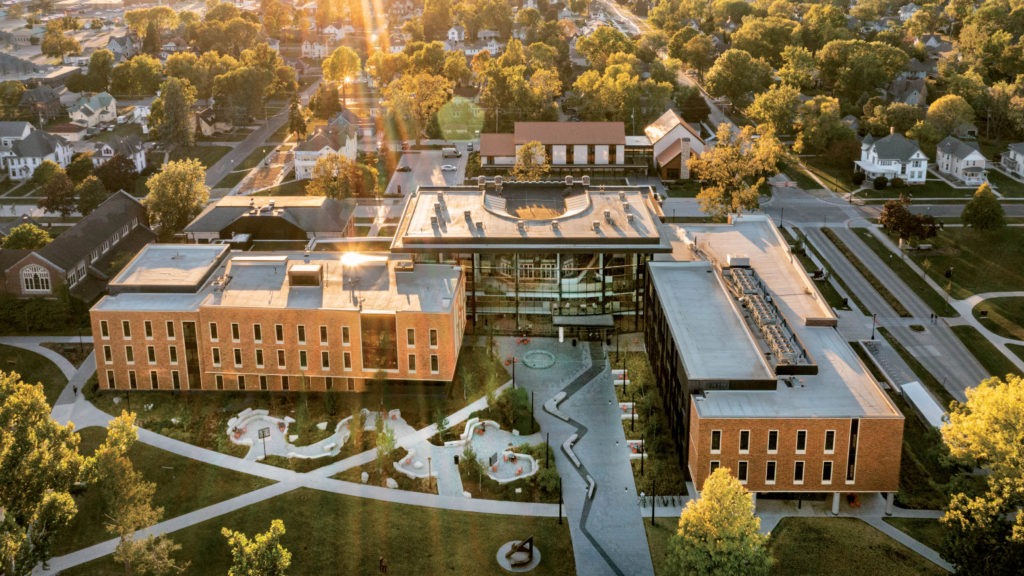 David Sundberg/Esto
David Sundberg/Esto
The
Mission
The
design of the Grinnell College Humanities and Social Studies Center reimagines
what's possible in liberal arts education. With 52,000 square feet of
modernized space and 125,000 square feet of new construction, the Center brings
fifteen separate departments into one location—providing 40 classrooms, 145
faculty offices, six inquiry labs, and student amenities to bolster Grinnell's
commitment to the humanities and social studies.
The conceptual framework for the project was to "foster effective intellectual collisions that would enrich a student's education," according to Rob, meaning that students and faculty who were studying and teaching different disciplines would cross paths contributing to the exchange of ideas. "From the onset of the project," Rob said, "we set out to have the Center not just provide a new home for different disciplines to coexist but to create an environment where they would mix." We asked questions like, 'What might happen if a student studying economics crossed paths with an anthropology professor?'"

The
Center's design answers this question by providing a variety of options for
collaboration, with larger, dynamic gathering spaces welcoming visitors in the
atrium – to medium-sized collaboration spaces associated with the various
academic disciplines located throughout the building – to smaller collaboration
zones sprinkled throughout the facility that create opportunities for impromptu
one-on-one conversations or focused work. Rob added, "It's working…last
time we visited the building, almost every space was being used. In fact, one
student told me she had to wake up early to make sure she got her favorite spot
because even students not majoring in the Humanities were using the
building."
The
Process
"Designing
a building for a close-knit community such as Grinnell required a great deal of
consensus-building to make the best decisions," Rob explained. "That
included taking anything and everything into consideration—ranging from what
type of atmosphere or vibe we want to create in the new building to how much it
would cost to realize their collective vision."
From the beginning of the design process, Rob said, "I was impressed with how committed Grinnell was to facilitating an inclusive design and visioning process. The College welcomed participation and held meetings with diverse groups: students, alumni, faculty, town residents, and staff. Grinnell went beyond what I've witnessed at other colleges and universities," Rob recalled. "I was thoroughly impressed and energized at how they facilitated work sessions and larger group meetings to gain input that ultimately led to a design that encapsulates a collective vision…not an easy task."
The
site Grinnell chose for the new Center encompasses two historic structures, the
Carnegie Library and the Alumni Recitation Hall; the challenge of blending the
old and the new was forefront in the development of the design. Additionally,
the College is located in a predominantly residential area.
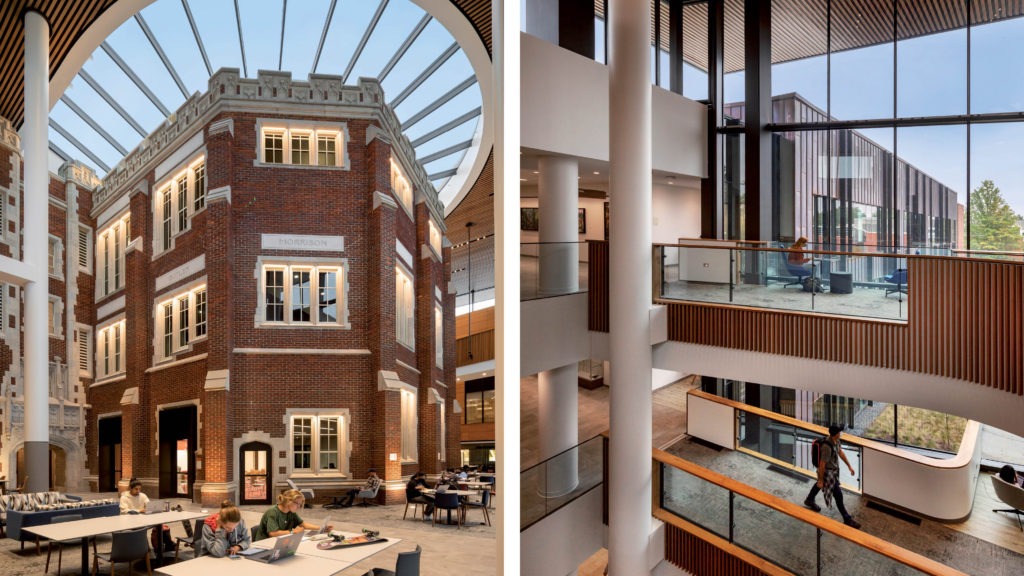 David Sundberg/Esto
David Sundberg/Esto
"We
aimed to make sure the scale of the new structure wasn't overbearing and
arrived at a design response that created a series of buildings or pavilions,
including the two historic structures," Rob said. "The heart of the
project is at the intersection of four pavilions, unified by a three-story
atrium with bridges that connect the old with the new. This new structure
embraces Alumni Recitation Hall, creating a central, light-filled courtyard
that looks toward the future of liberal arts education while respecting the
heritage of one of Grinnell's most treasured landmarks."
Regarding
the building aesthetics, the design team looked for inspiration from the campus
and community. "Grinnell's buildings are predominantly brick, but there is
a broad range of colors and patterns in use on campus," Rob explained.
"We also looked at The Merchants National Bank in downtown Grinnell,
designed by Louis Sullivan, legendary architect and mentor to Frank Lloyd
Wright. This building's brick has a tremendous visual impact with its blend of
distinct colors that creates a houndstooth-like pattern on its facades which
inspired our team's explorations of the new Center's facades."
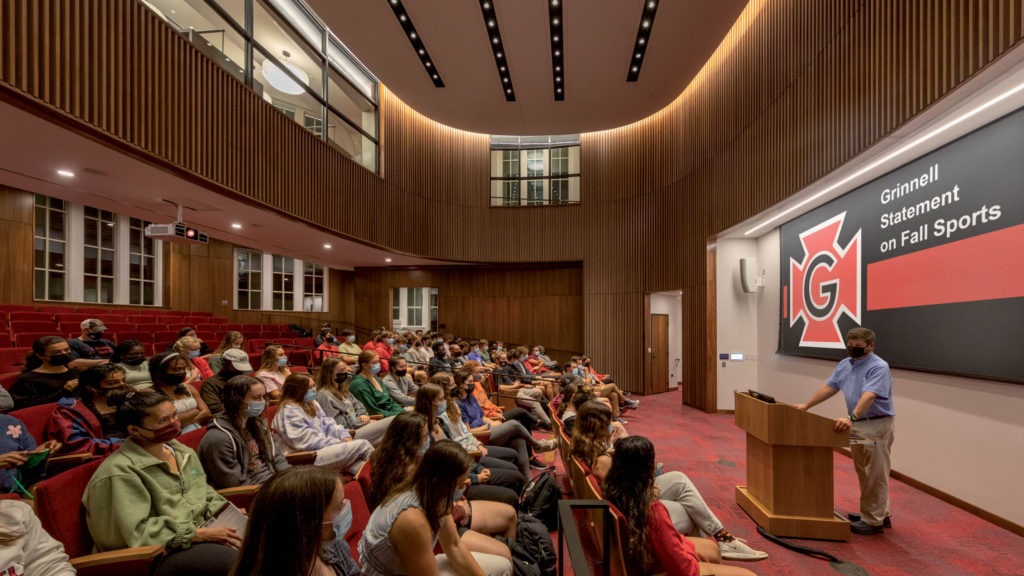 David Sundberg/Esto
David Sundberg/Esto
"We
created early concept renderings to look at the variety of colors," Rob
recalled. "Then we examined other ways to have the patterning of the brick
be further enhanced by light and shadow. This was achieved by tilting every
other brick ever so slightly, as well as mocking up different approaches to the
mortar joints. The result was a facade that changes throughout the day as the
sun hits it from different angles."
With
the addition of over 150,000 square feet directly adjacent to two of Grinnell's
cherished historic landmarks, how to maintain natural light in the spaces
housed in these structures was a challenge.
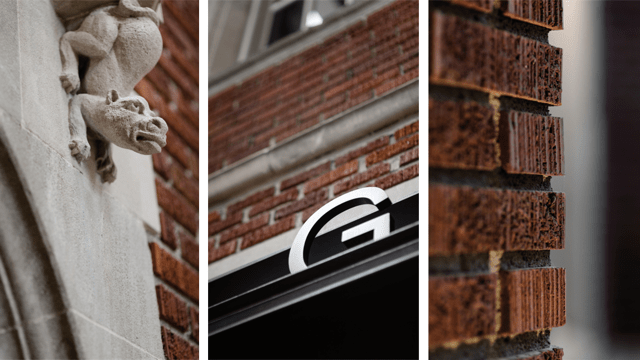
"The way we solved for this was by using the central atrium space as a source of light to the facade of the historic structures," Rob said. "The atrium has glazing on all four sides, which creates an indoor piazza that has become one of the campus's most popular destinations. The eastern side of the atrium is four stories of floor-to-ceiling glass which brings in abundant daylight and allows the building's occupants to enjoy views out to a new plaza space that incorporates outdoor classrooms and cafe seating. The idea was to create a glass veil that blurred the boundary between the amenity spaces inside and out and framed Alumni Recitation Hall's beautiful facade."
Another
way the new addition brings light into the atrium is through a monumental
skylight structure that frames the tower of Alumni Recitation Hall. This
circular skylight hovers above the tower to bask its newly renovated collegiate
Gothic limestone and brick details in natural light.
"The
president of the college called it the ‘Halo skylight’,” Rob said. "I
thought it looked a bit like the Statue of Liberty's crown, but if the
president of the college calls it the Halo, that's what you go with!"
Reimagining
how the historic structures could be modernized to serve the campus for another
one hundred years posed several challenges for the design team. Alumni
Recitation Hall originally had a grand auditorium which, over the years,
through multiple renovations, had been chopped up and altered beyond repair.
"We really wanted to bring this space back to its original grandeur,"
Rob said. "So, we basically gutted the structure and started from
scratch."

Another
challenge was that the layout of the auditorium had an entrance in the front,
which created disruption if people in the audience were to enter or exit during
a presentation. "Faculty joked about how students were not always on time
or would leave early, and they would create disruption by having to walk by the
presenter to get to their seats," Rob said. "We solved this by
creating a new shell within the old shell of the historic structure; creating
walkways that allow people entering or exiting the space to be shielded from
the stage; the walkways also improved acoustics and audio-visual
capabilities."
Another
space that was reimagined through the renovation of the auditorium was a new
reading room that took the place of an old balcony structure that was still in
place. "This is a private space now for the faculty to get away from the
hustle and bustle of their daily lives," Rob explained, "but with its
direct views down into the auditorium, it also serves as additional audience
seating when needed.
Grinnell's mission for environmental stewardship was a driving force in the design process. At 77% Energy Use Intensity (EUI) savings compared to the AIA 2030 Baseline, the building outperforms the AIA 2030 challenge. A series of whole building energy modeling charrettes, including comparative massing analysis and life cycle costing exercises, were performed during the design phases allowing stakeholders to find a balance between energy usage, daylight, aesthetics, and other functional needs.
Overall, Grinnell College's Humanities and Social Studies Center makes possible an inclusive teaching and learning experience attuned to emerging research, technology, and collaboration – all while honoring Grinnell's historic campus and tradition of excellence in education.

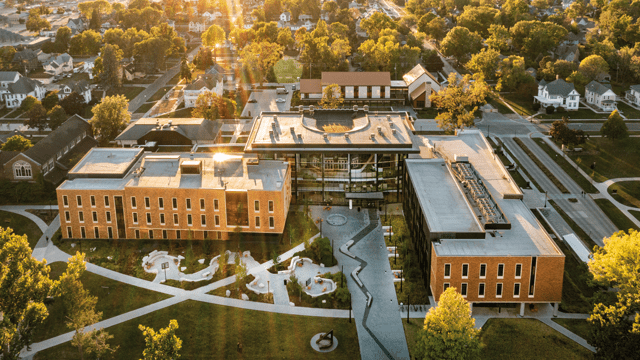 David Sundberg/Esto
David Sundberg/Esto David Sundberg/Esto
David Sundberg/Esto
 David Sundberg/Esto
David Sundberg/Esto David Sundberg/Esto
David Sundberg/Esto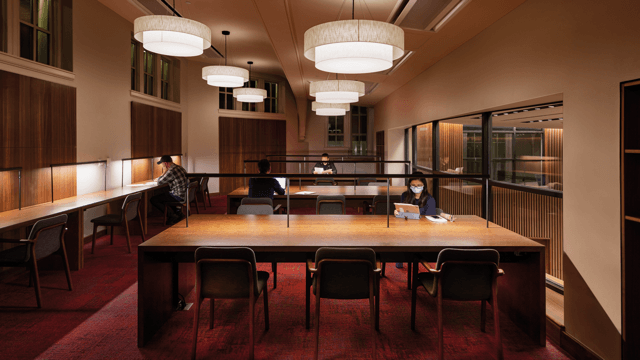 David Sundberg/Esto
David Sundberg/Esto
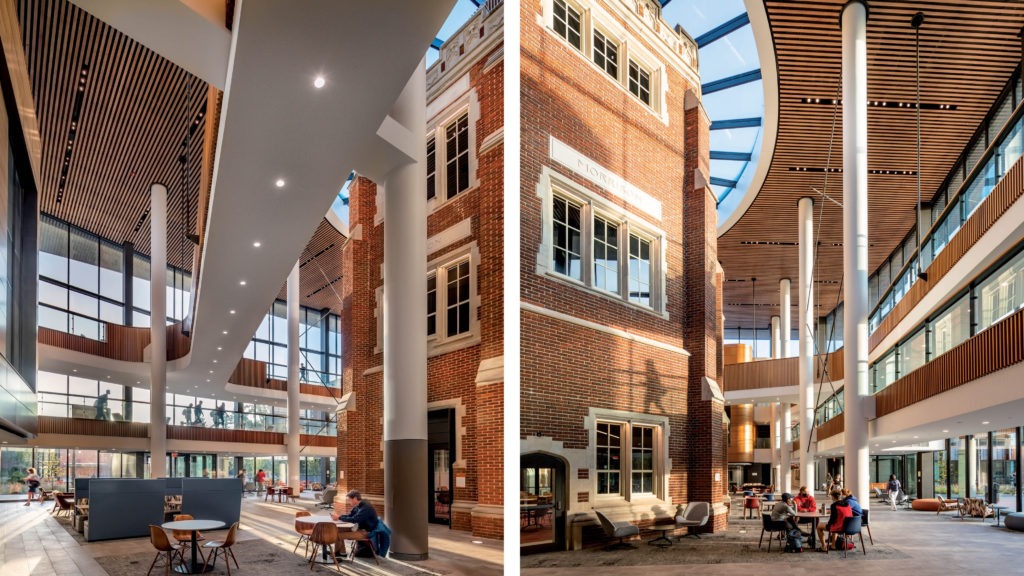 David Sundberg/Esto
David Sundberg/Esto